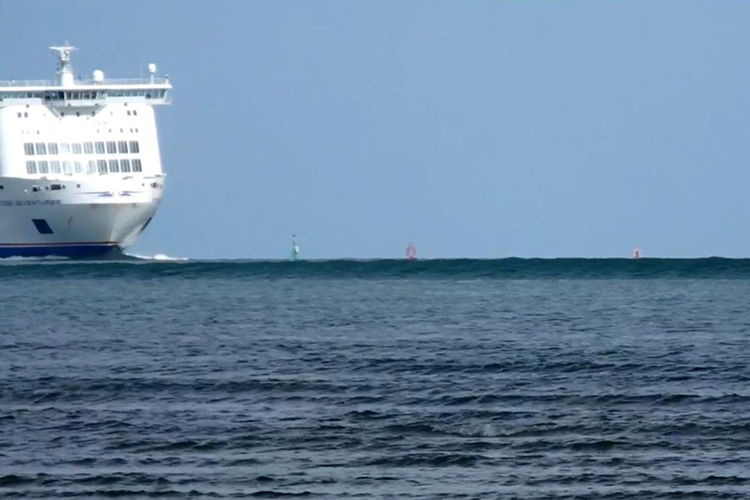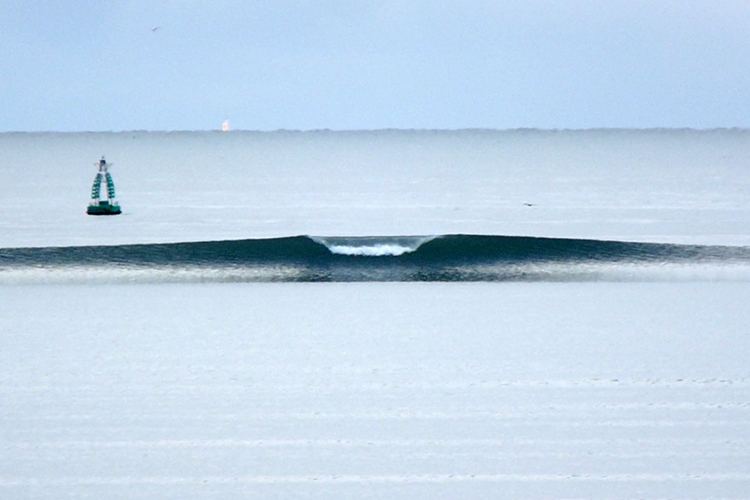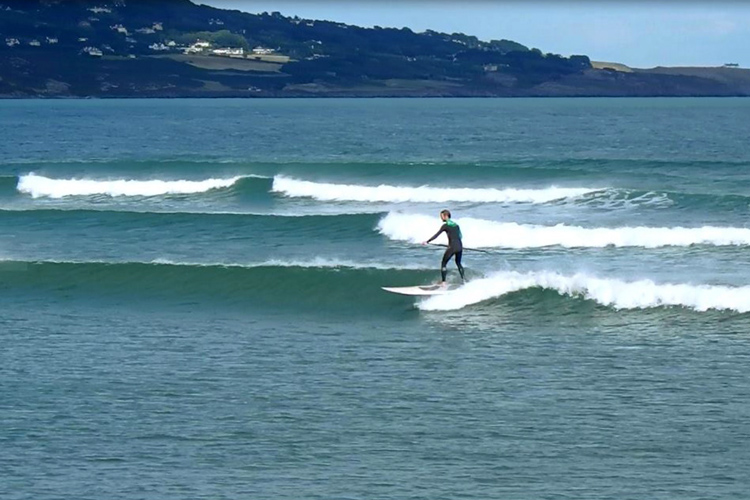Many surfers have already personally witnessed the beauty and the quality of the waves Ireland has to offer. And, on top of that, they're relatively uncrowded, too.
The country has hundreds of miles of coastline surrounded by raw, natural landscapes and dramatic cliffs.
But not every surfer knows that the longest waves in Ireland and, who knows, maybe the longest waves in Europe, are breaking in the capital, Dublin, just outside the port mouth.
Local surfers ride the wake waves created by the ferries that navigate Dublin Bay in and out of the city.
And given the number of trips and direct connections between Ireland and the United Kingdom daily, there is no shortage of waves.
Dublin's longest waves break at Dollymount Beach, near Bulls Island, near the long rock jetty that extends into the Bay.

"The local ferry wave is a lovely and fun wave that generally works on low-to-mid tide and can reach between two-and-six feet, depending on the speed from the ferry and the wind direction," Sascha Baltes, a German surfer who fell in love with the wave, tells SurferToday.
"Surfers have been riding these waves for at least ten years. Everyone claims to be the first, but I can't say who rode it first."
Four-Minute Rides at Dublin Bay
Baltes says he is a wave hunter and loves to find and surf tidal bore waves, ferry, and river waves.
So, he's been trying to analyze and identify the right time to hit the Dublin wave.
"The best conditions are generally on low and mid-tide, not really at high tide," adds Sascha Baltes.
"You get bigger waves if the wind is blowing side or side-offshore. Depending on the days, you get between two to five ferries coming in a row from 4:30 pm to 6 pm."

The waves start breaking far outside along the port's long rock jetty. That's when they get a good size with the right conditions.
Then, as they peel and progress toward the shore, they get smaller.
The best way to ride the Dublin Bay waves is with a stand-up paddleboard or longboard, but it's much easier to get through the fat sections with the help of a paddle.
"Francois Colussi, from Pure Magic Surf Shop, and Paul Byrne, from irishsup.com - two ferry wave riding locals - told me that the longest ride on these waves was around four minutes. That's quite long!" concludes Baltes.
So, next time you're in Dublin, and before enjoying a pint of Guinness, embrace the ferry wave adventure.
The waves themselves are not the biggest and the fastest, but the fact that there are rides that can go up to two minutes and that this wave breaks right in the middle of the Irish capital makes it a unique experience.
